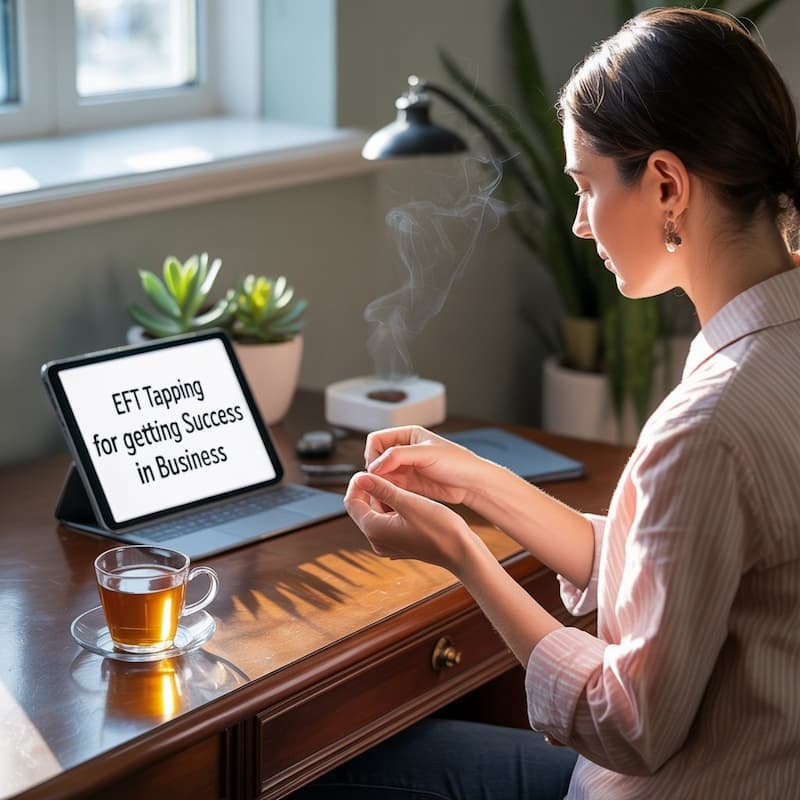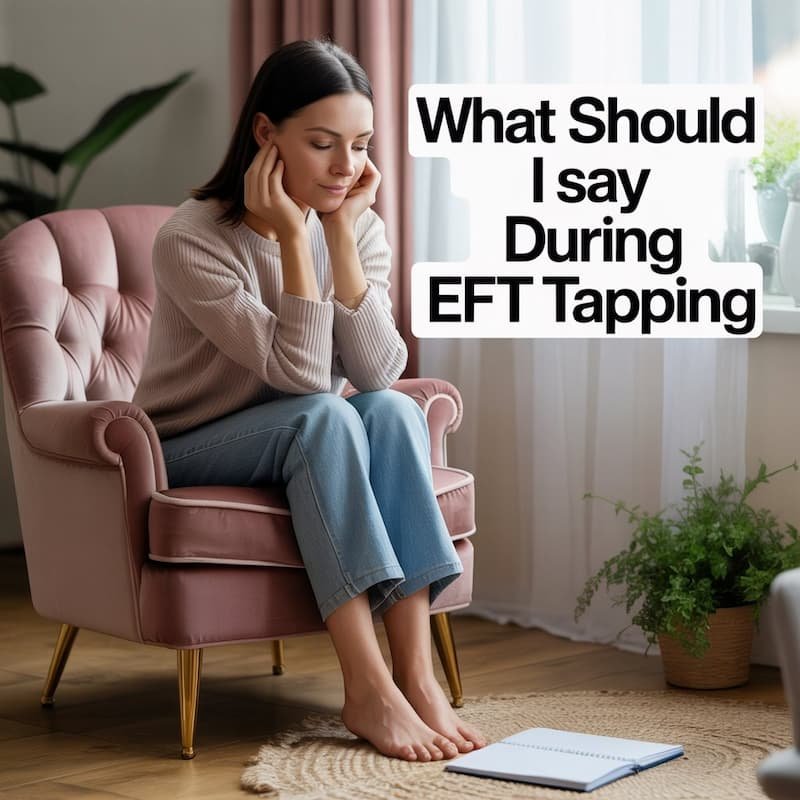How to use EFT Tapping for Depression and Anxiety
I know depression and anxiety firsthand — because I’ve lived with them for most of my life.
I started experiencing depression as early as age five or six. My earliest memories are filled with rejection from my parents simply because I was a girl.
They constantly compared me to my brother, telling me I’d never be good enough and praising him instead.

Over time, that constant comparison and emotional neglect planted seeds of sadness in me.
I spent years trying to win their approval, but nothing ever changed. By my mid-20s, my mild depression had turned into chronic depression. At 25, I hit my breaking point.
I remember feeling like there was no hope left. I couldn’t imagine living the rest of my life this way.
My days blurred into a cycle of sleeping, waking up, distracting myself with TV (since I had no friends), eating, and going back to sleep.
Disclaimer: The content on this page is for educational and informational purposes only. EFT (Emotional Freedom Techniques) is not a substitute for medical, psychological, or psychiatric treatment. Please consult a licensed professional for any medical or mental health concerns.
I tried exercising. I tried hobbies. But when depression had me in its grip, even lifting a finger felt impossible. My body felt heavy, like I was carrying the weight of the world.
Discovering EFT Tapping and the Disappointments
I sought help from therapists, and while they did help in their own way, the results never lasted.
Around that time, I began exploring EFT tapping. But to my disappointment, many practitioners I met didn’t practice EFT correctly. They relied on generic tapping scripts, repeating affirmations and tapping without addressing the deeper events that were actually causing my depression.
This didn’t help me at all, and I started to lose hope again.

The Turning Point
Everything changed when I decided to learn EFT for myself. I joined a training program and spoke to the founder, Gary Craig. I told him how scared I was to revisit my painful memories. He said something that stuck with me:
“There’s no other way. You have to go to your events and work through them.”
It was the hardest decision I ever made but I jumped back into my past for events and followed through. I learned to face those “bad” memories head-on and process them using EFT. I worked through events one by one, starting slowly. At first, I tackled just one emotion at a time. It was exhausting, but I kept going. Since i was a beginner going slow was very important so I feel relaxed and do not stress myself too much.
Over the years, I became faster and more confident with the process. I learned how to get lasting results without creating backlash or emotional overwhelm, something I now do for my clients as well.
Where I Am Now
It’s been two years since I last had a major depressive episode. Do I still feel sad when something bad happens? Of course — I’m human. But now, sadness passes through me instead of staying stuck for days or weeks.
Back then, depression also created a lot of anxiety and fear in me. I didn’t know what would happen next, and life felt impossible. EFT changed that. I wrote down every painful event from my past and worked on each one until its emotional charge dropped. It took a lot of patience and commitment to the process, but it worked.

If you’re struggling with depression, my advice is that you commit to EFT for at least a year. Don’t expect overnight results. For me, it was far better than giving up on myself. I had suffered for so long so I decided I deserved a happy ending, no matter how long it took.
How to Do EFT for Depression and Anxiety
- List your events – Write down the events that still bother you. Include every emotion they bring up.
- Work on one event at a time – Avoid opening too many events at once. When you’re depressed, this can trigger emotions you might not be able to handle.
- Tap until the intensity drops – Use the 0–10 scale. Keep tapping until your emotions drop to at least a 2 or 3.
- Rest when needed – If you feel exhausted, stop. Continue the next day.
- Test your progress – Go back to the event in your mind. If the emotional charge is gone or very low, you’ve cleared it. If not, find the aspects you missed and tap on them.
A Note About Tapping Scripts
Tapping scripts can help, but they work more like painkillers, they reduce symptoms temporarily without addressing the root cause. If you feel overwhelmed, a script can be a quick relief tool. But for chronic depression and anxiety, you’ll need to work on specific events to see lasting change.
My Final Thoughts
Getting out of depression is hard work, but if you’re living with depression right now, you’re already doing hard work just by getting through each day. The effort you put into EFT will feel small compared to the suffering depression causes.
Today, I’m free from depression. I started this blog to help others who might be in the same place I was. I was lucky to find a few kind, understanding EFT practitioners who changed my life, and now I want to pay it forward.

If you try EFT, go slow. Give yourself time. And don’t be discouraged if you don’t feel better after just one session. Heavy emotions can take time to clear. Give it a week or a month — you might be surprised at the difference you feel.
If you have any questions, drop them in the comments. I’ll do my best to help you if you feel stuck.






